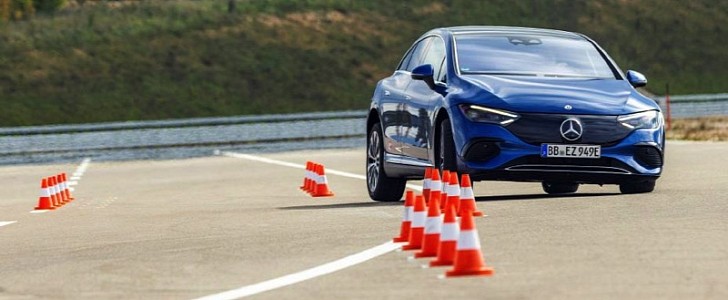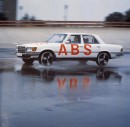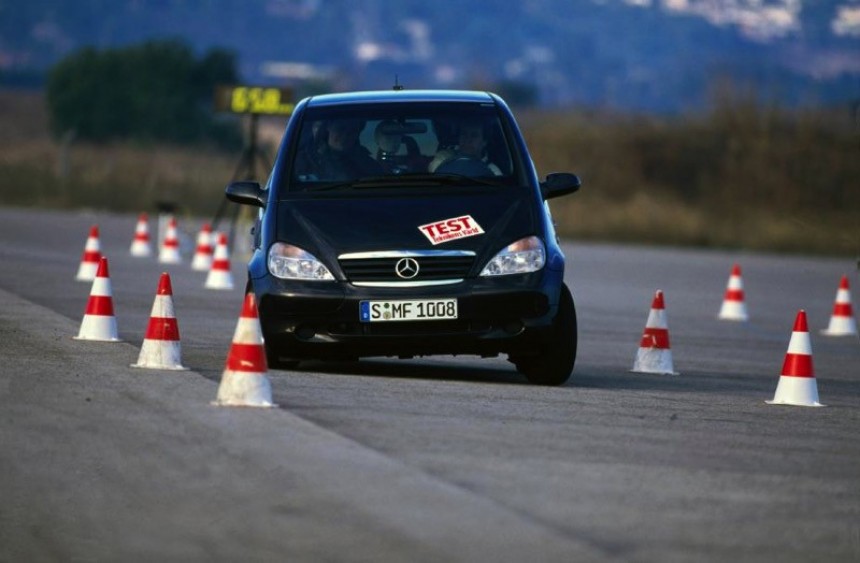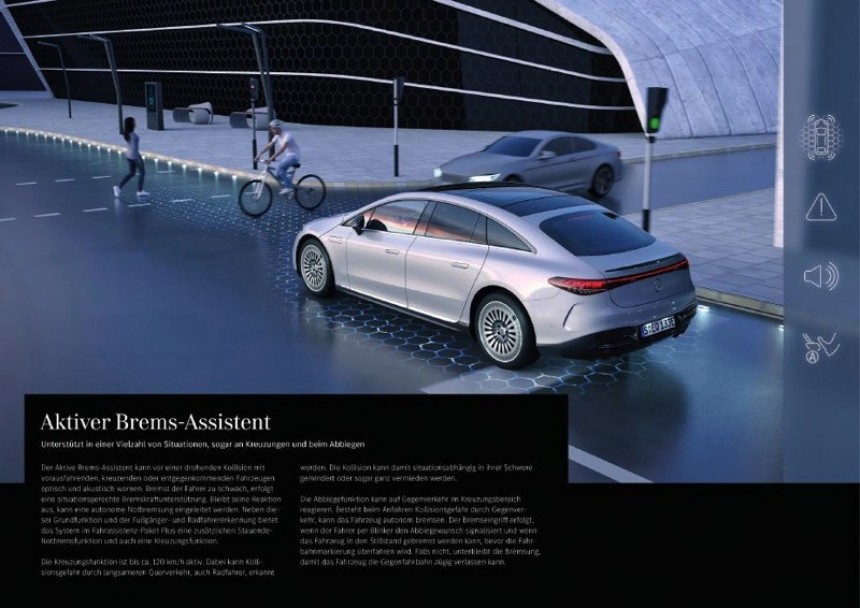Mercedes-Benz (MB) is a German car manufacturer with a strong reputation for luxury vehicles, cutting-edge technologies, and high safety standards. It is one of the oldest car companies in the world, with a history dating back to Karl Benz's 1886 creation of the first internal combustion engine in a car, as seen in the Benz Patent Motorwagen, although commercially founded as an automotive brand, a while later, in 1926.
Recently, the company presented its elaborate foresight for its upcoming vehicles: to achieve accident-free driving by 2050, a concept they call "Vision Zero." The company's ambitious goal is guided by thoroughly studying real-world accidents, with the invaluable support of MB's own Accident Research unit, which has been in operation for over 50 years.
In their statement, the brand acknowledges an unpleasant incident that took place in October, exactly 25 years ago, and sparked a more avid preoccupation on its part with vehicle safety and improved road manners. In 1997, during a Swedish "moose test." MB's compact car offering at the time, the A-Class, failed the evaluation by notoriously rolling over, sparking widespread concern for the driving dynamics of the model as well as prompting an eye-watering $250 million recall for the already sold 18,000 vehicles.
In further response to that event and its aftermath, Mercedes-Benz widely implemented the Electronic Stability Program (ESP) in all Mercedes-Benz vehicles, starting in 1999, long before it became mandatory by law in Europe in 2011. For the company, those early safety implementation efforts were crucial and laid the path for today's myriad of active driver assistance systems that modern vehicles employ.
Moreover, 20 years ago, MB also introduced the PRE-SAFE system, marking the first time active components were used to supplement passive preventive measures to enhance accident outcomes. Examples of such technologies included automated window and sunroof closing in critical driving scenarios that could indicate an impending crash, preventative tensioning of the front seat belts, or repositioning the front passenger seat to a more upright posture or automatic side bolster inflation on the multi-contoured front seats.
The PRE-SAFE system has come a long way since those early undertakings, with newer developments closely interacting with the Active Brake Assist feature while also taking advantage of highly accurate radar technology. The latter can utilize sensors front and rear that can even prevent rear-end collisions by cautioning the traffic following behind with rapidly flashing lights as a warning sign. Additionally, in 2016, the Impulse Side feature introduction meant that the vehicle could lift the driver or front passenger inwards out of the danger zone just before a side impact.
Actual variants of the PRE-SAFE system can even protect its passengers against hearing loss by triggering an acoustic reflex of the inner year. It is achieved by emitting pink noise frequencies through the car's speakers just before a possible impact. Those noises cause a small muscle in the inner ear to contract, which, in turn, influences the coupling of the eardrum, preparing passengers' hearing for the high sound pressures generated during a vehicle collision.
Recent developments in Mercedes-Benz safety standards also include measures aimed at increasing the protection of back-seat passengers, such as belt tensioners for the back seats, side airbags, and window bags. In 2020, MB introduced the first frontal airbag for back-seat passengers in the S-Class, reflecting the car's chauffeured vehicle status.
In present times, Mercedes-Benz is making substantial steps toward making an intriguing innovation an everyday reality: a centralized software based on the future MB.OS platform aiming to replace the current architecture of numerous control units and lines. It will reduce potential sources of error and provide a foundation for control systems to respond even quicker to various sensor signals. If the large number of actuators that vastly influence the car's driving dynamics would be centrally managed, new options for fine-tuning the driving experience will emerge, unlocking handling characteristics ranging from exceptionally comfortable to impressively dynamic.
The foremost objective of Mercedes-Benz's "Vision Zero" concept is to achieve zero road deaths by 2050 and to cut by half the number of traffic fatalities and serious injuries by 2030 compared to 2020. Even more, those goals have also been included in the German Federal Government's coalition agreement, whilst the World Health Organisation (WHO) and the United Nations Regional Commissions seem to be similarly committed.
To accomplish 'Vision Zero,' many various domains and institutions, from transportation and urban planners to road authorities and lawmakers, will need to closely collaborate, though Mercedes- Benz affirms that secure infrastructures should be as significant as any other accepted universal standard in the world.
Although going above and beyond to make its "vision of accident-free driving" a reality by 2050, Mercedes-Benz has its work cut out for it. We can only hope that their brilliant engineering endeavors will finally pay off and that in a few decades' time, car accidents will only be a distant memory of ours or a curious story to tell our grandchildren about.
In their statement, the brand acknowledges an unpleasant incident that took place in October, exactly 25 years ago, and sparked a more avid preoccupation on its part with vehicle safety and improved road manners. In 1997, during a Swedish "moose test." MB's compact car offering at the time, the A-Class, failed the evaluation by notoriously rolling over, sparking widespread concern for the driving dynamics of the model as well as prompting an eye-watering $250 million recall for the already sold 18,000 vehicles.
Moreover, 20 years ago, MB also introduced the PRE-SAFE system, marking the first time active components were used to supplement passive preventive measures to enhance accident outcomes. Examples of such technologies included automated window and sunroof closing in critical driving scenarios that could indicate an impending crash, preventative tensioning of the front seat belts, or repositioning the front passenger seat to a more upright posture or automatic side bolster inflation on the multi-contoured front seats.
The PRE-SAFE system has come a long way since those early undertakings, with newer developments closely interacting with the Active Brake Assist feature while also taking advantage of highly accurate radar technology. The latter can utilize sensors front and rear that can even prevent rear-end collisions by cautioning the traffic following behind with rapidly flashing lights as a warning sign. Additionally, in 2016, the Impulse Side feature introduction meant that the vehicle could lift the driver or front passenger inwards out of the danger zone just before a side impact.
Recent developments in Mercedes-Benz safety standards also include measures aimed at increasing the protection of back-seat passengers, such as belt tensioners for the back seats, side airbags, and window bags. In 2020, MB introduced the first frontal airbag for back-seat passengers in the S-Class, reflecting the car's chauffeured vehicle status.
In present times, Mercedes-Benz is making substantial steps toward making an intriguing innovation an everyday reality: a centralized software based on the future MB.OS platform aiming to replace the current architecture of numerous control units and lines. It will reduce potential sources of error and provide a foundation for control systems to respond even quicker to various sensor signals. If the large number of actuators that vastly influence the car's driving dynamics would be centrally managed, new options for fine-tuning the driving experience will emerge, unlocking handling characteristics ranging from exceptionally comfortable to impressively dynamic.
To accomplish 'Vision Zero,' many various domains and institutions, from transportation and urban planners to road authorities and lawmakers, will need to closely collaborate, though Mercedes- Benz affirms that secure infrastructures should be as significant as any other accepted universal standard in the world.
Although going above and beyond to make its "vision of accident-free driving" a reality by 2050, Mercedes-Benz has its work cut out for it. We can only hope that their brilliant engineering endeavors will finally pay off and that in a few decades' time, car accidents will only be a distant memory of ours or a curious story to tell our grandchildren about.
















